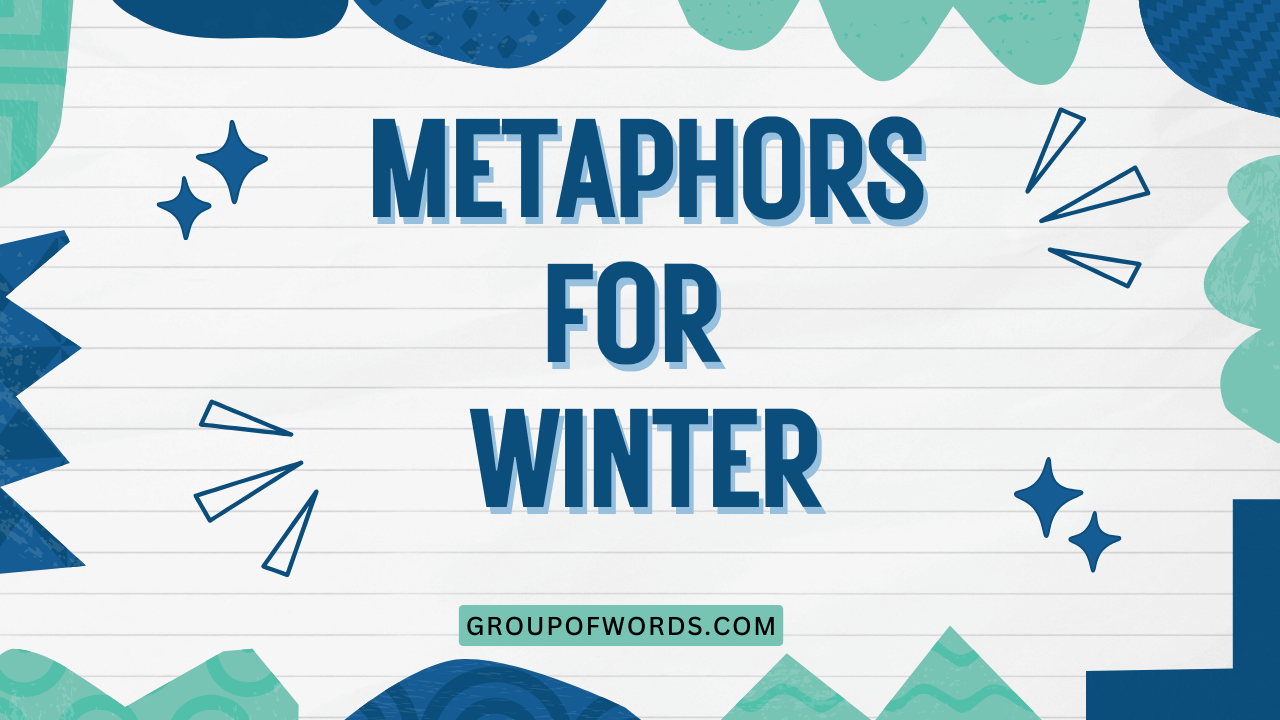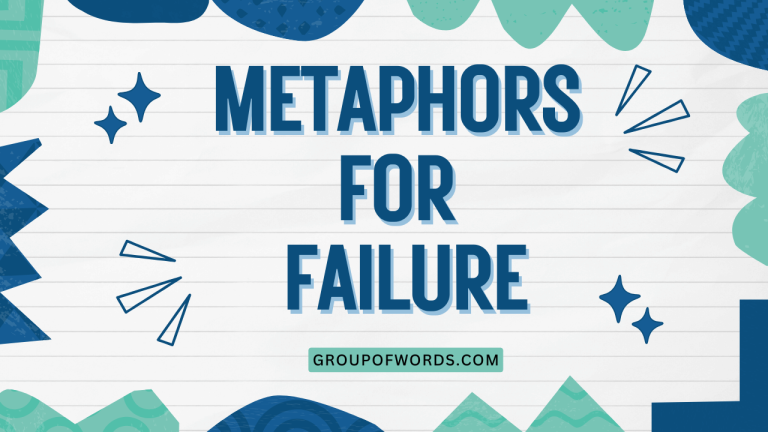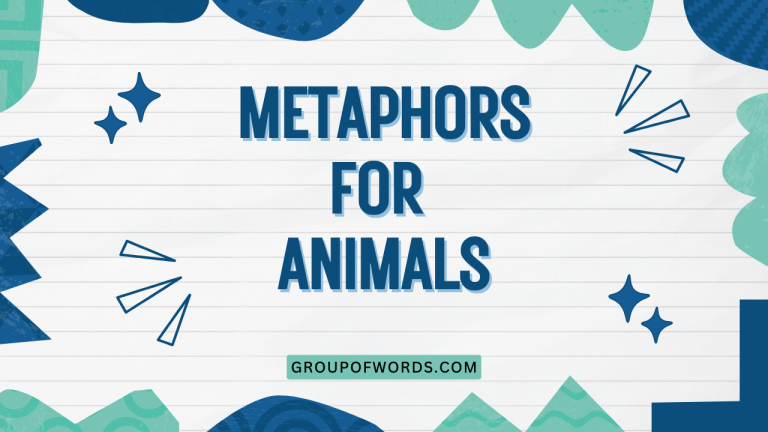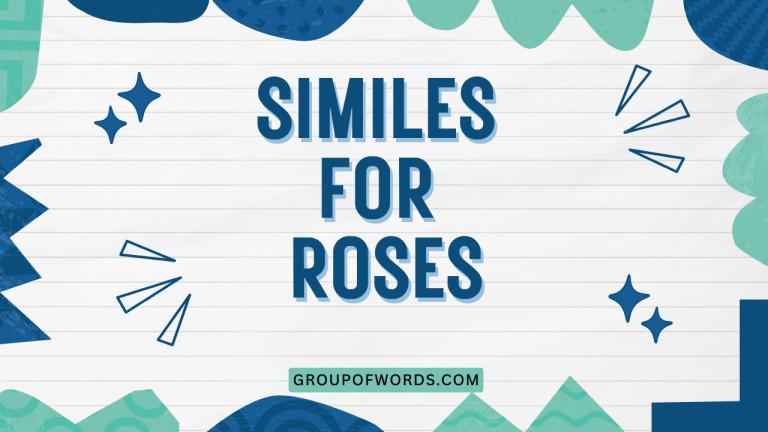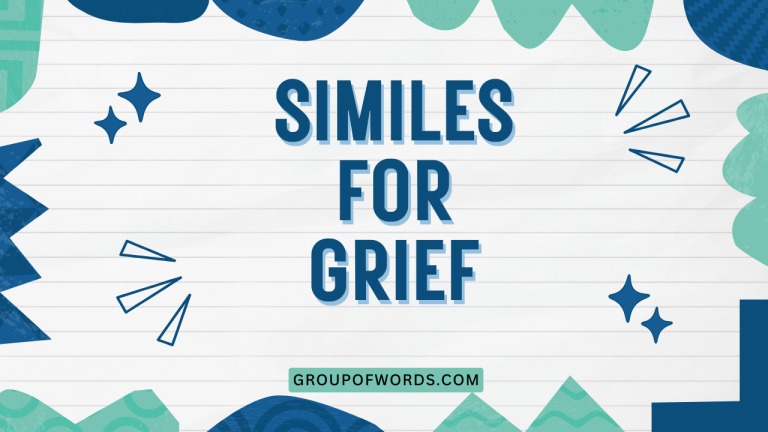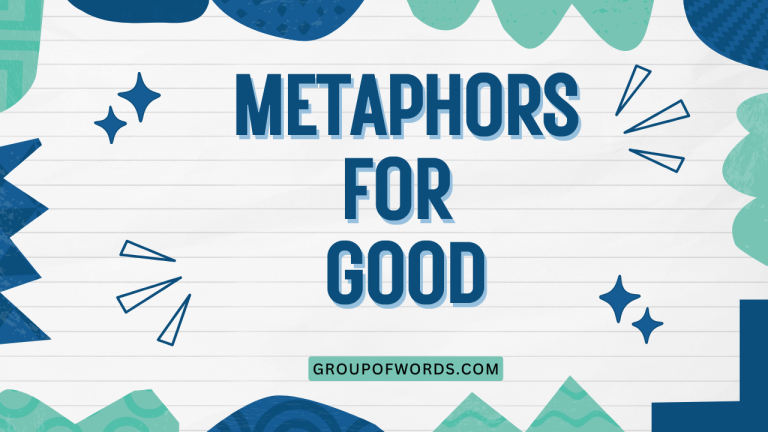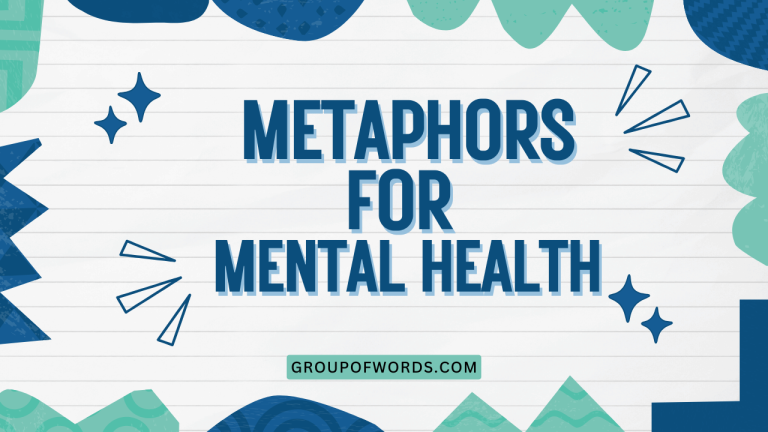Winter’s Words: Mastering Metaphors for the Coldest Season
Winter, a season of stark beauty and biting cold, often inspires vivid imagery. Harnessing the power of metaphors allows us to express the nuances of winter in creative and evocative ways.
Understanding these metaphors not only enhances our appreciation of literature and poetry but also enriches our own writing and communication skills. This article delves into the world of winter metaphors, exploring their structure, usage, and impact, providing you with the tools to master this essential aspect of English expression.
Whether you’re a student, a writer, or simply an enthusiast of language, this guide will equip you with the knowledge to navigate the frosty landscape of winter metaphors.
This comprehensive guide is designed for English language learners of all levels, from beginners to advanced speakers. Whether you’re looking to expand your vocabulary, improve your writing skills, or simply gain a deeper understanding of English figurative language, this article will provide you with the tools and knowledge you need to succeed.
It covers everything from the basic definition of metaphors to advanced usage tips and common mistakes to avoid.
Table of Contents
- Definition of Metaphor
- Structural Breakdown of Winter Metaphors
- Types and Categories of Winter Metaphors
- Examples of Winter Metaphors
- Usage Rules for Winter Metaphors
- Common Mistakes with Winter Metaphors
- Practice Exercises
- Advanced Topics in Winter Metaphors
- Frequently Asked Questions
- Conclusion
Definition of Metaphor
A metaphor is a figure of speech that directly compares two unrelated things without using “like” or “as.” It asserts that one thing is another, creating a connection based on shared qualities or characteristics. Metaphors are powerful tools for conveying complex ideas, evoking emotions, and adding vividness to language.
In essence, a metaphor transfers qualities from one thing to another. It works by suggesting a resemblance or analogy between two seemingly different concepts.
This transfer allows us to understand one concept in terms of another, often leading to new insights and perspectives. Metaphors are ubiquitous in everyday language, literature, and even scientific discourse, making them an essential element of effective communication.
The function of a metaphor extends beyond mere decoration. It serves to illuminate, clarify, and persuade.
By drawing a comparison, a metaphor can make an abstract idea more concrete, a complex concept more understandable, or an argument more compelling. This ability to transform and enrich language makes metaphors indispensable in various contexts, from casual conversation to formal writing.
Structural Breakdown of Winter Metaphors
Understanding the structure of a metaphor helps in crafting and interpreting them effectively. A typical metaphor consists of two main elements: the tenor and the vehicle. The tenor is the subject being described, while the vehicle is the object or concept used to describe the tenor. The connection between the tenor and vehicle is the ground, which refers to the shared characteristics or similarities that make the comparison meaningful. Let’s break this down further with examples related to winter.
In the metaphor “Winter is a white wolf,” the tenor is “winter,” and the vehicle is “a white wolf.” The ground is the shared characteristics of coldness, silence, and potential danger. By understanding these elements, we can analyze how the metaphor functions and what it communicates about winter.
The effectiveness of a metaphor depends on the clarity and relevance of the ground. A strong metaphor draws a connection that is both surprising and insightful, revealing a hidden or unexpected relationship between the tenor and the vehicle.
Conversely, a weak metaphor may be confusing or unconvincing if the ground is unclear or the comparison is too far-fetched.
Types and Categories of Winter Metaphors
Winter metaphors can be categorized based on the type of imagery they employ. Here are some common categories:
Nature-Based Metaphors
These metaphors use elements of nature, such as snow, ice, and trees, to describe aspects of winter. They often focus on the physical characteristics of the season.
Emotion-Based Metaphors
These metaphors use emotions, such as sadness, loneliness, and peace, to describe the feelings associated with winter. They often reflect the psychological impact of the season.
Activity-Based Metaphors
These metaphors use activities, such as hibernation, skiing, and ice skating, to describe the actions and behaviors associated with winter. They often highlight the ways people adapt to the season.
Abstract Metaphors
These metaphors use abstract concepts, such as time, death, and rebirth, to describe the broader themes and meanings associated with winter. They often explore the philosophical significance of the season.
Examples of Winter Metaphors
Below are several tables filled with examples of winter metaphors, categorized for easier understanding. These examples demonstrate the diverse and creative ways in which winter can be described using figurative language.
Each category provides a different lens through which to view the season, highlighting its various aspects and associations.
The following table showcases nature-based metaphors for winter. Notice how each metaphor uses elements of the natural world to convey the essence of winter’s physical characteristics.
| Metaphor | Analysis |
|---|---|
| Winter is a white blanket covering the earth. | Compares snow to a blanket, emphasizing its protective and enveloping qualities. |
| The wind is a frozen dagger. | Compares the wind to a dagger, highlighting its sharp and piercing coldness. |
| Snowflakes are frozen tears of the sky. | Compares snowflakes to tears, suggesting a sense of sadness or melancholy. |
| Ice is a mirror reflecting the gray sky. | Compares ice to a mirror, emphasizing its reflective and cold nature. |
| The trees are skeletons reaching for the sky. | Compares bare trees to skeletons, highlighting their stark and lifeless appearance. |
| Winter is a sleeping giant. | Compares winter to a sleeping giant, suggesting a period of dormancy and potential power. |
| The river is a ribbon of ice. | Compares the frozen river to a ribbon, emphasizing its smooth and elegant appearance. |
| The sun is a distant memory in winter. | Compares the sun’s presence in winter to a distant memory, highlighting its diminished warmth and light. |
| Frost is a delicate lace on the windowpane. | Compares frost to lace, emphasizing its intricate and beautiful patterns. |
| Winter is an iron fist gripping the land. | Compares winter to an iron fist, highlighting its harsh and unforgiving nature. |
| The snow-covered fields are a silent ocean. | Compares the fields to an ocean, emphasizing their vastness and stillness. |
| Winter’s breath is a chilling whisper. | Compares the winter breeze to a whisper, highlighting its subtle yet penetrating coldness. |
| The frozen lake is a vast, glassy eye. | Compares the lake to an eye, emphasizing its reflective surface and stillness. |
| Winter is a season of icy daggers and frozen sighs. | A combination of metaphors, emphasizing the cold and melancholic aspects of winter. |
| The landscape is a canvas of white. | Compares the landscape to a canvas, highlighting its pristine and uniform appearance. |
| Winter is a fortress of ice and snow. | Compares winter to a fortress, emphasizing its protective yet isolating qualities. |
| The snowflakes danced like tiny, frozen ballerinas. | Compares snowflakes to ballerinas, emphasizing their delicate and graceful movement. |
| Winter is the earth’s deep slumber. | Compares winter to sleep, emphasizing the dormancy and rest of the natural world. |
| The icy wind was a biting serpent. | Compares the wind to a serpent, highlighting its dangerous and insidious nature. |
| Winter is a time when nature holds its breath. | Compares winter to holding one’s breath, emphasizing the stillness and anticipation of spring. |
| The snow is a soft shroud over the world. | Compares snow to a shroud, emphasizing its concealing and protective qualities. |
| Winter is a stark, white silence. | Emphasizes the quiet and stillness associated with winter through stark imagery. |
| The frozen branches are crystal sculptures. | Compares frozen branches to sculptures, highlighting their intricate and beautiful forms. |
| Winter’s touch is a frozen caress. | Contrasts the harshness of winter with a gentle touch, creating a paradoxical image. |
The following table illustrates emotion-based metaphors for winter. These metaphors delve into the feelings and moods that winter often evokes, such as loneliness, peace, and introspection.
| Metaphor | Analysis |
|---|---|
| Winter is a season of quiet contemplation. | Compares winter to contemplation, emphasizing its introspective and reflective qualities. |
| Loneliness is the winter of the heart. | Compares loneliness to winter, highlighting its cold and isolating nature. |
| Winter is a time of peaceful solitude. | Compares winter to solitude, emphasizing its tranquil and calming aspects. |
| Sadness is the frozen ground of winter. | Compares sadness to frozen ground, highlighting its barren and unproductive nature. |
| Winter is a blanket of melancholy. | Compares winter to a blanket, emphasizing its heavy and oppressive feeling. |
| Hope is a tiny seed buried in winter’s snow. | Compares hope to a seed, suggesting its potential for growth even in harsh conditions. |
| Winter is a long, silent sigh. | Compares winter to a sigh, emphasizing its sense of resignation and weariness. |
| Despair is the icy grip of winter. | Compares despair to an icy grip, highlighting its suffocating and debilitating effect. |
| Winter is a period of emotional hibernation. | Compares winter to hibernation, emphasizing its withdrawal and introspection. |
| Grief is the frozen rain of winter. | Compares grief to frozen rain, highlighting its cold and persistent nature. |
| Winter is a time to nurture inner warmth. | Emphasizes the need for emotional warmth and resilience during the cold season. |
| The soul’s winter is a time for reflection. | Compares the soul’s journey to winter, emphasizing introspection and self-discovery. |
| Winter is a canvas for painting memories. | Compares winter to a canvas, highlighting its role in creating and preserving memories. |
| Winter’s silence is a symphony of introspection. | Contrasts silence with a symphony, emphasizing the depth and richness of inner thought. |
| Winter is a mirror reflecting our deepest selves. | Compares winter to a mirror, highlighting its ability to reveal hidden aspects of our personalities. |
| The heart’s winter is a time for healing. | Compares the heart’s struggles to winter, emphasizing the potential for recovery and growth. |
| Winter is a reminder of life’s fragility. | Highlights the vulnerability of life during the harsh winter months. |
| The mind’s winter is a fertile ground for ideas. | Compares the mind’s quietude to winter, emphasizing its potential for creativity and innovation. |
| Winter is a season of inner transformation. | Emphasizes the potential for personal growth and change during the winter months. |
| The spirit’s winter is a time for renewal. | Compares the spirit’s journey to winter, emphasizing the opportunity for rebirth and rejuvenation. |
| Winter is a test of resilience and strength. | Highlights the challenges and opportunities for growth presented by the winter season. |
| The frozen tears of winter water the seeds of spring. | Connects winter’s sadness with the promise of future growth and renewal. |
| Winter’s silence is a lullaby for the weary soul. | Contrasts the harshness of winter with a gentle lullaby, creating a comforting image. |
| Winter is a time when the heart seeks refuge. | Emphasizes the need for emotional comfort and security during the cold season. |
The following table provides activity-based metaphors for winter. These metaphors focus on the actions and behaviors associated with winter, such as hibernation, skiing, and ice skating, highlighting how people and animals adapt to the season.
| Metaphor | Analysis |
|---|---|
| Winter is a time for hibernation and rest. | Compares winter to hibernation, emphasizing its focus on rest and recuperation. |
| Life slows to a gentle waltz in winter. | Compares life to a waltz, highlighting its slower and more deliberate pace. |
| Winter is a season of cozy gatherings. | Emphasizes the warmth and connection of social gatherings during the cold season. |
| Thoughts skate across the frozen lake of the mind. | Compares thoughts to skaters, highlighting their movement and agility. |
| Winter is a time for building inner fires. | Emphasizes the need for internal motivation and passion during the cold season. |
| Dreams are bundled up like warm winter clothes. | Compares dreams to warm clothes, emphasizing their protective and comforting qualities. |
| Winter is a season for storytelling by the fire. | Highlights the tradition of sharing stories during the long winter nights. |
| Memories are like snowflakes, each one unique. | Compares memories to snowflakes, emphasizing their individuality and beauty. |
| Winter is a time for savoring simple pleasures. | Emphasizes the appreciation of small joys during the cold season. |
| Ideas are seeds planted in the winter of the mind. | Compares ideas to seeds, highlighting their potential for growth even in dormancy. |
| Winter is a time for fortifying the spirit. | Emphasizes the need for inner strength and resilience during the cold season. |
| Challenges are icy paths to be navigated with care. | Compares challenges to icy paths, highlighting the need for caution and strategy. |
| Winter is a season for nurturing creativity. | Emphasizes the potential for artistic expression and innovation during the cold season. |
| Relationships are like warm blankets in winter. | Compares relationships to blankets, highlighting their comforting and protective qualities. |
| Winter is a time for embracing the quiet moments. | Emphasizes the value of stillness and reflection during the cold season. |
| Goals are like stars guiding us through the winter night. | Compares goals to stars, highlighting their role in providing direction and hope. |
| Winter is a season for celebrating resilience. | Emphasizes the importance of perseverance and adaptability during the cold season. |
| The mind is a snow globe, thoughts swirling within. | Compares the mind to a snow globe, capturing the dynamic and ever-changing nature of thoughts. |
| Winter is a time for nesting and nurturing. | Emphasizes the importance of creating a comfortable and supportive environment. |
| The days are short stories, each one unique. | Compares days to stories, highlighting their individual character and significance. |
| Winter is a season for cozying up with a good book. | Highlights the enjoyment of reading and relaxation during the cold season. |
| The heart is a fireplace, warming those around it. | Compares the heart to a fireplace, emphasizing its capacity for love and compassion. |
| Winter is a time for dreaming of spring. | Emphasizes the anticipation and hope for warmer days ahead. |
| The soul is a garden, waiting for the winter to pass. | Compares the soul to a garden, highlighting its potential for growth and renewal. |
The following table presents abstract metaphors for winter. These metaphors explore the broader themes and meanings associated with winter, such as time, death, and rebirth, often delving into the philosophical significance of the season.
| Metaphor | Analysis |
|---|---|
| Winter is a metaphor for the end of a cycle. | Compares winter to the end, emphasizing its role as a conclusion and transition. |
| Life’s challenges are winter storms to be weathered. | Compares challenges to storms, highlighting their intensity and the need for resilience. |
| Winter is a time of reflection before rebirth. | Emphasizes the importance of introspection and preparation for new beginnings. |
| Loss is the winter of the soul. | Compares loss to winter, highlighting its cold and isolating effects on the spirit. |
| Winter is a canvas for new beginnings. | Emphasizes the potential for fresh starts and opportunities after a period of dormancy. |
| Time is a river frozen in winter. | Compares time to a frozen river, highlighting its stillness and apparent stagnation. |
| Winter is a reminder of mortality. | Emphasizes the fragility of life and the inevitability of death. |
| Silence is the language of winter. | Highlights the quietness and stillness of the season as a form of communication. |
| Winter is a period of dormancy before growth. | Emphasizes the importance of rest and preparation for future development. |
| Change is the wind that sweeps through winter. | Compares change to wind, highlighting its transformative and sometimes disruptive effects. |
| Winter is a time for releasing what no longer serves us. | Emphasizes the opportunity for letting go of old habits and patterns. |
| The past is a snow-covered landscape. | Compares the past to a landscape, highlighting its distant and sometimes obscured nature. |
| Winter is a mirror reflecting our inner strength. | Emphasizes the opportunity for self-discovery and resilience during challenging times. |
| Hope is the sunlight peeking through winter clouds. | Compares hope to sunlight, highlighting its ability to bring warmth and optimism. |
| Winter is a time for cultivating inner peace. | Emphasizes the importance of finding tranquility and contentment during the cold season. |
| The future is a seed buried in winter’s ground. | Compares the future to a seed, highlighting its potential for growth and development. |
| Winter is a season for embracing the unknown. | Emphasizes the opportunity for exploration and discovery during a time of uncertainty. |
| Wisdom is like a warm fire in winter. | Compares wisdom to a fire, highlighting its ability to provide comfort and guidance. |
| Winter is a time for letting go of illusions. | Emphasizes the opportunity for clarity and truth during a period of introspection. |
| The present is a snowflake, unique and fleeting. | Compares the present to a snowflake, highlighting its individuality and transience. |
| Winter is a season for seeking inner light. | Emphasizes the importance of finding guidance and inspiration from within. |
| The soul is a tree, weathering the winter storms. | Compares the soul to a tree, highlighting its resilience and ability to endure. |
| Winter is a time for nurturing our roots. | Emphasizes the importance of connecting with our origins and values. |
| The heart is a compass, guiding us through winter’s darkness. | Compares the heart to a compass, highlighting its ability to provide direction and purpose. |
Usage Rules for Winter Metaphors
Using winter metaphors effectively requires attention to several key rules. First, ensure that the comparison is relevant and meaningful.
The vehicle should have a clear connection to the tenor, and the ground (shared characteristics) should be easily understood. Avoid metaphors that are too obscure or far-fetched, as they can confuse or alienate your audience.
Second, be mindful of the context. The appropriateness of a metaphor depends on the tone and purpose of your writing or speech.
A formal essay may require more subtle and sophisticated metaphors, while a casual conversation may allow for more playful and imaginative comparisons.
Third, avoid clichés. Overused metaphors, such as “Winter is a cold heart,” have lost their impact and originality.
Strive to create fresh and unique comparisons that will capture your audience’s attention. Consider exploring less common aspects of winter or finding new ways to describe familiar ones.
Finally, be consistent with your metaphors. Mixing metaphors can create confusion and undermine the clarity of your message.
If you begin by comparing winter to a sleeping giant, avoid introducing contradictory imagery later on.
Common Mistakes with Winter Metaphors
Several common mistakes can weaken the effectiveness of winter metaphors. One frequent error is using mixed metaphors, which combine incongruous images and create confusion.
For example:
| Incorrect | Correct |
|---|---|
| Winter is a cold heart that sings a song of ice. | Winter is a cold heart. / Winter sings a song of ice. |
Another common mistake is using clichés. Overused metaphors lack originality and fail to engage the audience.
For example:
| Incorrect | Correct |
|---|---|
| Winter is a cold, hard season. | Winter is an iron fist gripping the land. |
A third mistake is using metaphors that are too abstract or vague. The comparison should be clear and meaningful, with a readily apparent connection between the tenor and the vehicle.
For example:
| Incorrect | Correct |
|---|---|
| Winter is a feeling. | Winter is a blanket of melancholy. |
Practice Exercises
Test your understanding of winter metaphors with the following exercises. Identify the tenor, vehicle, and ground in each metaphor, and evaluate its effectiveness.
Create your own winter metaphors using the provided prompts.
Exercise 1: Identify the Tenor, Vehicle, and Ground
| Metaphor | Tenor | Vehicle | Ground |
|---|---|---|---|
| The wind is a frozen dagger. | |||
| Loneliness is the winter of the heart. | |||
| Snowflakes are frozen tears of the sky. | |||
| Winter is a sleeping giant. | |||
| Despair is the icy grip of winter. | |||
| The river is a ribbon of ice. | |||
| The trees are skeletons reaching for the sky. | |||
| Winter is a white blanket covering the earth. | |||
| Hope is a tiny seed buried in winter’s snow. | |||
| The sun is a distant memory in winter. |
Answer Key:
| Metaphor | Tenor | Vehicle | Ground |
|---|---|---|---|
| The wind is a frozen dagger. | Wind | Frozen dagger | Sharpness, coldness, piercing quality |
| Loneliness is the winter of the heart. | Loneliness | Winter | Coldness, isolation, barrenness |
| Snowflakes are frozen tears of the sky. | Snowflakes | Frozen tears | Delicacy, sadness, falling motion |
| Winter is a sleeping giant. | Winter | Sleeping giant | Dormancy, potential power, quietness |
| Despair is the icy grip of winter. | Despair | Icy grip | Suffocation, coldness, hopelessness |
| The river is a ribbon of ice. | River | Ribbon of ice | Smoothness, elegance, frozen state |
| The trees are skeletons reaching for the sky. | Trees | Skeletons | Bareness, lifelessness, starkness |
| Winter is a white blanket covering the earth. | Winter | White blanket | Coverage, protection, stillness |
| Hope is a tiny seed buried in winter’s snow. | Hope | Tiny seed | Potential, resilience, hidden growth |
| The sun is a distant memory in winter. | Sun | Distant memory | Diminished presence, fading warmth, nostalgia |
Exercise 2: Create Your Own Winter Metaphors
Complete the following sentences with creative winter metaphors:
- Winter is like __________.
- The snow is __________.
- The cold wind feels like __________.
- The bare trees resemble __________.
- Winter’s silence is __________.
- The frozen lake is __________.
- Winter’s touch is __________.
- The short days are __________.
- Winter’s nights are __________.
- The first snowfall is __________.
Example Answers: (Note: These are just examples; creativity is encouraged!)
- Winter is like a long, quiet dream.
- The snow is a soft, white shroud.
- The cold wind feels like a thousand icy needles.
- The bare trees resemble charred sentinels guarding the land.
- Winter’s silence is a deep, contemplative sigh.
- The frozen lake is a vast, glassy mirror.
- Winter’s touch is a frozen caress.
- The short days are fleeting whispers of sunlight.
- Winter’s nights are velvet tapestries dotted with diamond stars.
- The first snowfall is a magical transformation.
Advanced Topics in Winter Metaphors
For advanced learners, exploring the use of extended metaphors and symbolism in winter literature can provide deeper insights. An extended metaphor is a metaphor that is developed over several lines or paragraphs, creating a more complex and nuanced comparison.
Symbolism, on the other hand, uses winter as a symbol to represent broader themes, such as death, rebirth, or isolation.
Analyzing the works of poets and writers who frequently employ winter imagery can enhance your understanding of these advanced concepts. For example, Robert Frost’s “Stopping by Woods on a Snowy Evening” uses the winter setting to symbolize themes of duty, temptation, and the allure of death.
By examining how these elements interact, you can gain a more sophisticated appreciation of the power and versatility of winter metaphors.
Furthermore, consider the cultural and historical contexts in which winter metaphors are used. Different cultures may have unique associations with winter, reflecting their geographical location, climate, and traditions.
Understanding these variations can enrich your interpretation of winter metaphors and broaden your perspective on their significance.
Frequently Asked Questions
Q1: What is the difference between a metaphor and a simile?
A: Both metaphors and similes are figures of speech that compare two unlike things. However, a metaphor directly equates the two things (e.g., “Winter is a white wolf”), while a simile uses “like” or “as” to make the comparison (e.g., “Winter is like a white wolf”).
Q2: How can I avoid using clichés in my winter metaphors?
A: To avoid clichés, try to focus on unique or less commonly explored aspects of winter. Consider using vivid and specific imagery, and experiment with unexpected combinations of words. Think beyond the typical associations and strive for originality.
Q3: Can I use metaphors in formal writing?
A: Yes, metaphors can be used in formal writing, but they should be used judiciously and with careful consideration of the audience and purpose. Choose metaphors that are sophisticated and relevant, and avoid those that are too informal or colloquial.
Q4: How do I identify the tenor, vehicle, and ground in a metaphor?
A: The tenor is the subject being described, the vehicle is the object or concept used to describe the subject, and the ground is the shared characteristics or similarities between the two. Analyze the metaphor to identify these elements and understand how they relate to each other.
Q5: What are some common themes associated with winter metaphors?
A: Common themes include coldness, isolation, dormancy, death, rebirth, reflection, and resilience. Winter metaphors often explore the psychological and emotional impact of the season, as well as its broader philosophical significance.
Q6: How can I improve my ability to create effective winter metaphors?
A: Practice is key. Read widely, paying attention to how authors use metaphors to create vivid imagery and convey complex ideas. Experiment with different combinations of words and concepts, and seek feedback from others on your metaphors.
Q7: What role do cultural contexts play in interpreting winter metaphors?
A: Cultural contexts significantly influence the interpretation of winter metaphors. Different cultures may have unique associations with winter, reflecting their geographical location, climate, and traditions. Understanding these variations is crucial for a comprehensive interpretation. For example, cultures in warmer climates might associate winter with longing, while cultures in colder climates may focus on resilience and adaptation.
Q8: Are there any specific literary devices that often accompany winter metaphors?
A: Yes, several literary devices often enhance winter metaphors. These include personification (giving human qualities to winter elements, such as “Winter’s icy grip”), alliteration (using similar sounds for emphasis, such as “bitter, biting blizzard”), and imagery (creating vivid sensory experiences related to winter, such as “the crisp, crackling snow”). Combining these devices with metaphors can create powerful and evocative descriptions of winter.
Conclusion
Mastering metaphors for winter enables a deeper appreciation and more nuanced expression of the complexities of the season. This comprehensive guide provides the tools necessary to understand the structure, usage, and impact of winter metaphors.
By recognizing the tenor, vehicle, and ground, and by avoiding common mistakes, you can craft compelling and evocative descriptions of winter.
Continue to explore the world of winter metaphors through reading, writing, and analysis. Pay attention to how different authors use figurative language to create vivid imagery and convey complex ideas.
Experiment with your own metaphors, and seek feedback from others. With practice and dedication, you can master the art of using winter metaphors to enhance your communication skills and enrich your understanding of the English language.
